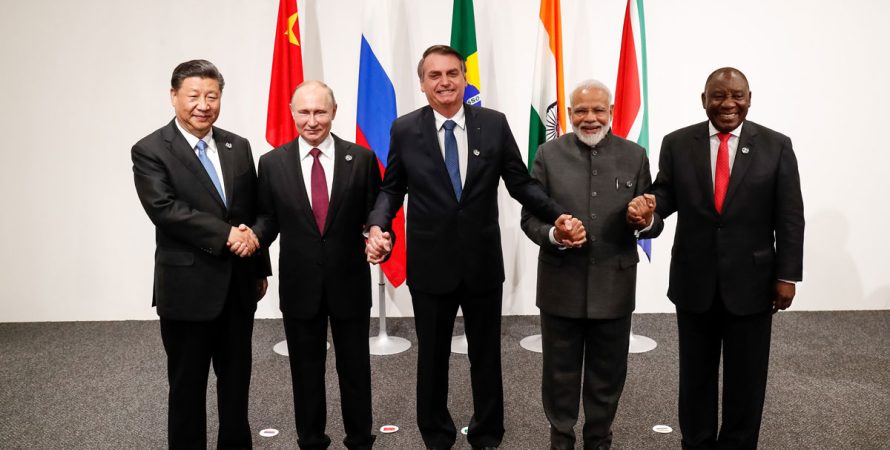Key Points
- BRICS started in 2001 as BRIC, an acronym coined by Goldman Sachs for Brazil, Russia, India, and China. South Africa was added in 2010.
- The notion behind the coinage was that the nations’ economies would come to collectively dominate global growth by 2050.
- The BRICS nations offered a source of foreign expansion for firms and strong returns for institutional investors.
- The party had largely ended by 2015, when Goldman closed its BRICS-focused investment fund.
What is BRICS?
BRICS is an acronym for Brazil, Russia, India, China, and South Africa. Goldman Sachs economist Jim O’Neill coined the term BRIC (without South Africa) in 2001, claiming that by 2050 the four BRIC economies would come to dominate the global economy. South Africa was added to the list in 2010.
Stay in the know on crypto by frequently visiting Crypto News Today
This thesis became conventional market wisdom in the aughts. But there were always skeptics, including some who claimed the phrase was Goldman marketing hype. Indeed, few talk about BRICS much anymore—at least not in terms of their global domination. Goldman closed its BRICS-focused investment fund in 2015, merging it with a broader emerging markets fund.
Understanding BRICS
Brazil, Russia, India, China, and South Africa ranked among the world’s fastest-growing emerging market economies for years, thanks to low labor costs, favorable demographics and abundant natural resources at a time of a global commodities boom.6
It’s important to note that the Goldman Sachs thesis wasn’t that these countries would become a political alliance (like the EU) or even a formal trading association. Instead, Goldman said they have the potential to form a powerful economic bloc, even acknowledging that its forecasts were optimistic and dependent on significant policy assumptions.
Still, the implication was that economic power would bring political power, and indeed leaders from BRICS countries regularly attended summits together and often acted in concert with each others’ interests.
Early Development of the BRIC Thesis at Goldman Sachs
In 2001, Goldman’s O’Neill noted that while global GDP was set to rise 1.7% in 2002, BRIC nations were forecasted to grow more quickly than the Group of Seven, the seven most advanced global economies: Canada, France, Germany, Italy, Japan, the United Kingdom and the U.S. In the paper “Building Better Economic BRICs,” O’Neill outlined his view of the potential of the BRIC nations.
In 2003, O’Neill’s Goldman colleagues Dominic Wilson and Roopa Purushothaman followed up with their report “Dreaming with BRICs: The Path to 2050.” Wilson and Purushothaman claimed that by 2050, the BRIC cluster could grow to a size larger than the G6, and the world’s largest economies would therefore look drastically different in four decades. That is, the largest global economic powers no longer would be the richest, according to income per capita.
In 2007 Goldman published another report, “BRICs and Beyond”, that focused on BRIC growth potential, the environmental impact of these growing economies and the sustainability of their rise. The report also outlined a Next 11, a term for 11 emerging economies, in relationship to the BRIC nations, as well as the ascendancy of new global markets.
Closure of Goldman’s BRICS Fund
Growth in the BRICS economies slowed down after the global financial crisis and the oil price collapse that began in 2014. By 2015, the BRICS acronym no longer looked like an attractive investment venue and funds aimed at these economies either shut down or merged with other investment vehicles.
Goldman Sachs merged its BRICS investment fund, which was focused on generating returns from these economies, with the broader Emerging Markets Equity Fund. The fund had lost 88% of its assets from a 2010 peak.9 In an SEC filing, Goldman Sachs stated that it did not expect “significant asset growth in the foreseeable future” in the BRICS fund.10 Per a Bloomberg report, the fund had lost 21% in five years.
BRIC is now used as a more generic term. For example, Columbia University established the BRICLab, where students examine foreign, domestic, and financial policies of BRIC members.![]()
Read More at INVESTOPEDIA
Please Read Essential Disclaimer Information Here.
© 2024 Crypto Caster provides information. CryptoCaster.world does not provide investment advice. Do your research before taking a market position on the purchase of cryptocurrency and other asset classes. Past performance of any asset is not indicative of future results. All rights reserved.
Contribute to CryptoCaster℠ Via Metamask or favorite wallet. Send Coin/Token to Addresses Provided Below.
Thank you!
BTC – bc1qgdnd752esyl4jv6nhz3ypuzwa6wav9wuzaeg9g
ETH – 0x7D8D76E60bFF59c5295Aa1b39D651f6735D6413D
MATIC – 0x7D8D76E60bFF59c5295Aa1b39D651f6735D6413D
LITECOIN – ltc1qxsgp5fykl0007hnwgl93zr9vngwd2jxwlddvqt





